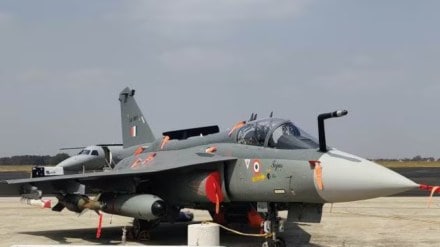The government has approved the purchase of 97 Tejas Light Combat Aircraft (LCA) Mark 1A for the Air Force in a 62000 crore deal. The decision was taken at a high-level meeting on Tuesday, August 19. According to defence sources quoted by ANI, the move allows state-run Hindustan Aeronautics Limited (HAL) to increase production of the homegrown fighter jet. This is the second big order after an earlier deal for 83 Tejas jets worth about Rs 48,000 crore.
Replacing old MiG-21 jets
A report by the Economic Times, citing a defence official said that the Indian Air Force will retire its MiG-21 fighter jets by September this year. At present, these aircraft are being flown from the Nal air base in Rajasthan and now, they will be replaced by the new LCA Mark 1A jets.
Officials have said that the project will not only strengthen the Air Force but also support India’s Defence industry, benefiting hundreds of small and medium businesses, which is why both the Defence Ministry and the Air Force have strongly supported the programme.
HAL, which has been a key player in India’s aerospace sector, is at the centre of this effort. Last year, Prime Minister Narendra Modi even flew in a Tejas trainer jet. It was reported to be the first time an Indian leader took a ride in a combat aircraft.
More Indian-made components
The Tejas Mark 1A comes with upgraded radar and avionics compared to the first 40 jets given to the Air Force. Officials said more than 65% of the new batch will be built with Indian-made components.
This order also highlights India’s larger goal of becoming self-reliant in defence production. HAL is also preparing for future orders, including over 200 Tejas Mark 2 jets and a similar number of next-generation Advanced Medium Combat Aircraft.
A step toward ‘Atmanirbharta’
In 2022, former Air Chief Marshal VR Chaudhari had pointed to the expansion of the Tejas programme during a visit to Spain, describing it as a big boost for Indian fighter jet manufacturing.
The government has time and again pushed Tejas as a symbol of its Atmanirbhar Bharat (self-reliant India) vision and as proof of India’s growing ambitions in the aerospace sector.
